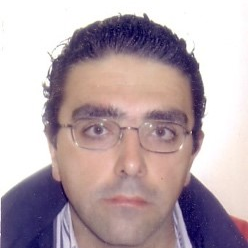Emerging CMOS Devices
A special issue of Micromachines (ISSN 2072-666X). This special issue belongs to the section "D1: Semiconductor Devices".
Deadline for manuscript submissions: closed (31 August 2021) | Viewed by 18925
Special Issue Editors
Interests: advanced device simulation; Monte Carlo; CMOS co-integration; 2D materials
Special Issues, Collections and Topics in MDPI journals
Interests: advanced device simulation; device characterization; CMOS co-integration; 2D materials; biosensors
Special Issues, Collections and Topics in MDPI journals
Special Issue Information
Dear Colleagues,
The next decade presents paramount challenges for the electronic community where different technologies will provide solutions in the emerging fields of big data, Internet of things, and artificial intelligence. In this scenario of electronic systems ubiquity, new CMOS device paradigms are being developed to fulfill future requirements and to be co-integrated with other emerging technologies including 2D materials. Great efforts are being made by industry and academia in the fields of fabrication, advanced simulation, characterization, and design to determine the emerging CMOS devices that will perform in future systems. Reconfigurable MOS, TFETs, 1TDRAM, MOS-based biosensors, and CMOS on non-conventional substrates and 2D materials will be key devices in future applications. In this Special Issue of Micromachines, researchers and developers are invited to submit manuscripts for the Special Issue “Emerging CMOS Devices”, where we will focus on advancements in the fabrication, simulation, and characterization of different electronic structures. This Special Issue welcomes articles and review articles that cover a broad range of possible topics, including but not limited to fabrication, simulation, and characterization of emerging CMOS devices, new channel materials for CMOS, 2D material-based CMOS applications, CMOS co-integration, nanometer-scale devices, alternative transistor architectures, or emerging memory devices. All submissions will be reviewed in accordance with the normal procedures of Micromachines.
We look forward to receiving your submissions!
Keywords:
Nanometer-scale devices: technology, characterization techniques, and evaluation metrics for high performance, low power, low standby power, high frequency, and memory applications.
Alternative transistor architectures including FDSOI, DGSOI, FinFET, MuGFET, vertical MOSFET, Nanowires, FeFET and Tunnel FET, MEMS/NEMS, Beyond-CMOS nanoelectronic devices.
New functionalities in silicon-compatible nanostructures and innovative devices representing the More than Moore domain, nanoelectronic sensors, biosensor devices, energy harvesting devices, RF devices, imagers, etc.
Emerging memory devices.
CMOS scaling perspectives; device/circuit level performance evaluation; switches and memory scaling. Three-dimensional integration of devices and circuits, heterogeneous integration.
Transport phenomena, compact modeling, device simulation, and front- and back-end process simulation.
Advanced test structures and characterization techniques, parameter extraction, reliability, and variability assessment techniques for new materials and novel devices.
New channel materials for CMOS: strained Si, strained SOI, SiGe, GeOI, III-V, and high mobility materials on insulator; carbon nanotubes; graphene and other two-dimensional materials.
Properties of ultra-thin films and buried oxides, defects, interface quality. Thin gate dielectrics: high-κ materials for switches and memory.
Prof. Dr. Carlos Sampedro
Prof. Dr. Francisco Gamiz
Guest Editors
Manuscript Submission Information
Manuscripts should be submitted online at www.mdpi.com by registering and logging in to this website. Once you are registered, click here to go to the submission form. Manuscripts can be submitted until the deadline. All submissions that pass pre-check are peer-reviewed. Accepted papers will be published continuously in the journal (as soon as accepted) and will be listed together on the special issue website. Research articles, review articles as well as short communications are invited. For planned papers, a title and short abstract (about 100 words) can be sent to the Editorial Office for announcement on this website.
Submitted manuscripts should not have been published previously, nor be under consideration for publication elsewhere (except conference proceedings papers). All manuscripts are thoroughly refereed through a single-blind peer-review process. A guide for authors and other relevant information for submission of manuscripts is available on the Instructions for Authors page. Micromachines is an international peer-reviewed open access monthly journal published by MDPI.
Please visit the Instructions for Authors page before submitting a manuscript. The Article Processing Charge (APC) for publication in this open access journal is 2600 CHF (Swiss Francs). Submitted papers should be well formatted and use good English. Authors may use MDPI's English editing service prior to publication or during author revisions.







